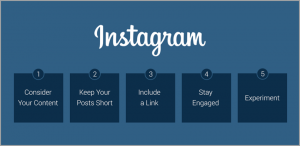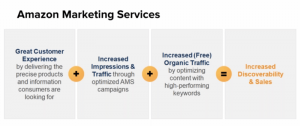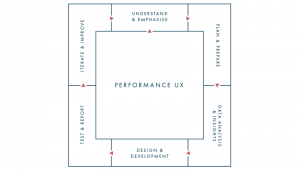
I don’t know if you have it yet. I don’t have it yet. The new LinkedIn interface for your desktop that is. Even though I don’t have it, I’ve seen it. I have a lot of friends who are influencers, insiders with LinkedIn, who’ve done webinars and videos, and they’ve shown how it works. If you’ve played around with the mobile version, you’re going to be a lot more familiar with the desktop version. They’ve really taken a lot of what’s happened on the mobile side of things and moved it to the desktop. It’s lost a little functionality but nothing that’s really going to rock your world. It is still LinkedIn, and it still does pretty much the same stuff.
The one thing that is not going to change though is how we use LinkedIn. I gave a presentation last week at Aurora University. They have a Sales Institute once every two months, and I was invited to speak on how to use LinkedIn for prospecting. “What I wanted to do today for you guys and gals is talk about the five steps to prospecting success using LinkedIn. Here are the five things, and I’ll cover each of them individually. Number one, connections. Number two, courtship. Number three, content marketing. Number four, cohesiveness, and number five, contracts, right. The whole purpose of prospecting is to generate business.”
1. Connections

Let’s start off with the first thing, connections. One of the core principles that I teach is relationship marketing. One of my favorite quotes by Zig Ziglar says, “You can get everything in life you want if you will just help enough other people get what they want.” That’s essentially what quality connections is all about. You want to make sure that you’re connecting up with your customers, your prospects, your power partners and your vendors and that you’re doing it with a purpose. You want to make sure you’re connecting with them in a way that’s going to help them. That’s really the key thing – we’re doing this to not only promote ourselves but to start out with a servant-leadership mind.
The best place to find a lot of these people are groups. If you can find a client, go look at the groups that they’re hanging out in. Chances are there might be some similar people in there that you could prospect. The goal is not to just friend them and jump on board. I mean, that’s like walking into a bar and tapping somebody on the shoulder and saying, “Hey, you’re pretty. Want to get married?” or “You’re handsome. Do you want to get married?” No. What you have to do is feed them great stuff, and that takes a little time. Don’t be the creep. The creep is the person that connects with you and then within 30 seconds sends you a direct message saying, “Watch my half-hour video and buy my crap,” right? That’s not how it works. That’s not how any of this stuff works. Just like the Esurance commercial.
2. Courtship

Point number two is what I call courtship, real-lationships. Spend a little time getting to know people and give them an opportunity to get to know you. During courtship a couple gets to know each other to decide whether or not there will be an engagement or other such agreement. It takes time for them to get to know you, and for you to get to know them. You want to make sure that you’re being a resource or help to them and that you’re building trust. It takes time to get to the point where you say, “Hey, I want to have a quick phone call with you,” or arrange a coffee or a meeting and say, “You know, I just want to find out what you do and see if there are any resources that I have in my network that can help you.” That’s how you start off a great relationship. You don’t jump right in and start selling.
3. Content Marketing

Point number three is content marketing. As you start to develop relationships with people, you want to provide them something of value. One of the best ways to provide value is through blogs, podcasts, videos. You can even provide value with other people’s content, if you find great articles in Entrepreneur magazine, Inc magazine, or maybe something parallel to your industry. You want to be known as the person who is constantly giving good content. You either create content or you share other people’s stuff. If you can create it yourself or have somebody in your organization create it, that’s even better. When you create it yourself, you’re creating something that starts to make you top-of-mind, and people will start to pay attention to you. Then they start to associate the great information with you. That’s ultimately what you want to do. You can do this via video, or you can do it via audio. You can get interviewed and share the interviews. You can do all that kind of stuff.
4. Cohesiveness

The fourth C is cohesiveness. What I’ve seen by going into corporations, and I do this all the time, is I go in and I teach sales teams how to use LinkedIn. I’ll get 20, 30 people in a room and start to look at all of their different profiles. I find that some have the logo of the company. Some have no pictures. Some talk about the company in a glowing perspective. Some have no overview or summary of what they do. What is even worse than that is when companies have a bunch of people who don’t work there any more who are listed as somebody working at their company.
Make sure everybody on your team is listed. If you work in a sales organization, you have more than just yourself. I’m a solopreneur. I can manage on my own. But if you have more than one person on your team, you want to make sure everybody is cohesive: that they’re all projecting the same message, that the team actually looks like a team, that everybody has a good picture and that their summary listed, that someone talks about what the company does, and that their headline is giving people an opportunity to ask, “What problem does this person solve?” That’s ultimately what you want to do.
You want to take a look at everybody in your company, everybody in your organization who is involved in sales and LinkedIn and make sure that they’re all on the ‘same page.’ When somebody looks at your company they should see that they all have great pictures, they have a cohesive message that they’re sharing, and that the message is congruent with the goals and the needs of your company. That’s huge. Make sure everybody is doing something similar. Make sure you’re reviewing those, updating those, and educating your people as to the way that you want your company to be shown on LinkedIn.
5. Contracts

The fifth and final C of this is converting connections into contracts, okay. What you really have to do is focus on the relationships. Everything starts with relationships, and it takes time. I’ve had customers who’ve finally worked with me who joined my BACON system training, hired me to build the websites, hired me to teach them how to do marketing, from three years ago. They saw a speech that I did and finally came up and said, “You know what, you resonated with me and now I’m ready to get started.” When people do that, do you have a plan to execute and measure for them what it is that they’re looking for? The other thing I suggest is, don’t be afraid to get help. Don’t be afraid to ask somebody to come in and review your LinkedIn profile, to help you figure out the best way for you to utilize it.
The bottom line here is to keep learning, because there’s always so much to learn when it comes to online marketing, especially when this new interface comes out. I’ll be working on a brand new course called The BACON System: Leveraging LinkedIn for Sales, and it’s coming soon. That might be a good tool for you to help you learn about how to use the new LinkedIn.
Final Thoughts
The new LinkedIn interface will take a little getting used to, but I think the changes will make LinkedIn easier to use in the long run. I will miss Pulse (article publishing platform), and some other features, but that is just the nature of social media platforms. Change is a constant. I would love to hear your thoughts and comments, especially when the new look and feel pops up on your desktop!
Digital & Social Articles on Business 2 Community(43)








